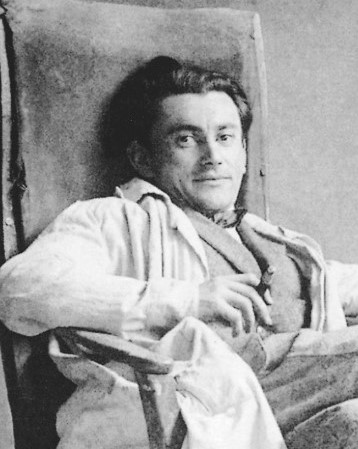Manfred STARKHAUS
January 4, 2019Rahel SZALIT-MARCUS
January 4, 2019Marc STERLING
PRYLUKY (UKRAINE) 1895 – PARIS 1976
Marc Sterling was born in Pryluky, a small town in Ukraine, where his father worked as a grain merchant. At the age of twelve, he became the apprentice of an icon painter in a neighboring city. In 1909, as he was fourteen years old, he gave up his craft apprenticeship and left to study painting at the Academy of Odessa, where he also got acquainted with sculpture. In 1916, following his mother’s death, he left for Moscow and enrolled in the School of Fine Arts. The following year, Sterling was involved in the Revolution and in the Russian avant-garde movements. He studied under Vladimir Tatlin at the Vhutemas, a revolutionary school that combined the School of Fine Arts and School of Decorative Arts. He got in touch with revolutionary artists, including the poet Mayakovsky, with whom he spent time at the studios where the propaganda posters were produced. In 1922, Mayakovsky encouraged Sterling to go to Berlin. He met Basia, a young Polish student who later became his wife and bore him two children. The couple arrived in Paris in 1923 and settled at the Hôtel Médical. He spent time on the terraces of cafés in Montparnasse where artists met up. He signed a three-year contract with the Zak gallery.
During World War II, Marc Sterling and his family took refuge with friends. In 1941, Basia died as a consequence of an operation. During the five following years, Sterling totally lost touch with the artistic community in Paris. Back in Paris in 1947, he acquired French nationality and met his friends in Montparnasse. He exhibited his work in France and abroad. He met Eliane, a Swiss sculptor who was a student of Zadkine. She became his partner in 1953. They settled in Peseux, near Neuchâtel, Switzerland. In 1956, he moved back to Paris and traveled to Holland, Italy, Spain, and Israel.
Stories of Jewish Artists of the School of Paris 1905-1939
FRENCH-ENGLISH
Capitale des arts, le Paris des années 1905-1939 attire les artistes du monde entier. De cette période de foisonnement, un terme est resté, celui d'Ecole de Paris, qui recouvre une grande diversité d'expression artistique. Dans ce brassage dont Montparnasse est le creuset, un groupe se distingue : celui des artistes juifs venus de Russie, de Pologne et d'Europe centrale. Si leurs styles sont variés, un destin commun les rassemble : ils fuient l'antisémitisme de leur pays d'origine. Certains ont connu la célébrité dès les années 1920, tels Soutine, Lipchitz ou Chagall. D'autres n'ont pas eu le temps ou la chance d'y accéder. Près de la moitié a péri dans les camps de concentration nazis.
From 1905 to 1939, Paris attracted artists from all over the globe as the capital of the art world. This period of artistic proliferation became known as the School of Paris, and includes a great diversity of artistic expression. Within the teeming art world centred on Montparnasse, one group set itself apart: Jewish artists from Russia, Poland, and Central Europe. Although their styles were diverse, they shared the common fate of fleeing anti-Semitic persecutions in their home countries. Some became famous in the 1920s, such as Soutine, Lipchitz, and Chagall, while others did not have the time or the luck to gain renown. Nearly half of these artists died in Nazi concentration camps.





